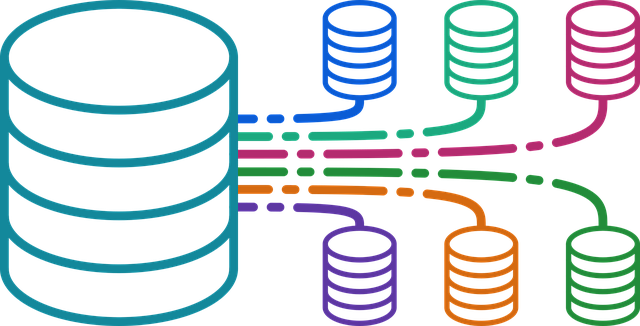Structured data, specifically the FAQPage schema, significantly enhances website visibility on search engines by organizing and displaying frequently asked questions as rich snippets. To implement this, correctly structure content using markup languages like JSON-LD or Microdata, defining the "FAQ" type, and optimize for snippet visualization while adhering to best practices. This improves user experience, boosts SEO, and increases clicks and satisfaction through visually appealing FAQ results. Regularly review and update FAQ content and schema markup to maintain optimal performance in a competitive digital landscape.
In today’s digital landscape, enhancing user experience and optimizing search engine results are paramount. One powerful tool to achieve this is implementing the FAQPage schema, leveraging FAQ structured data to unlock rich FAQ results on search engines. This article delves into the fundamentals of FAQ structured data, exploring why integrating it into your content is beneficial. We’ll guide you through the process, highlight key elements, and reveal how it boosts user engagement and SEO, ultimately increasing your site’s visibility and SERP real estate.
- Understanding FAQ Structured Data: The Basics
- Why Add FAQPage Schema to Your Content?
- Key Elements of a Successful FAQPage Schema
- Implementing FAQSchema: Step-by-Step Guide
- Benefits for User Engagement and SEO
- Measuring Success and Continuous Improvement
Understanding FAQ Structured Data: The Basics

Structured data is a powerful tool for search engines to better understand and present content, and FAQ structured data is a specific type that can significantly enhance your website’s visibility in search results. The FAQPage schema is designed to organize and highlight frequently asked questions and their answers directly within rich snippets on search engine result pages (SERPs). This structured format not only provides users with quick access to essential information but also catches the attention of search engines, leading to improved rankings.
Implementing the FAQPage schema involves correctly structuring your content using specific markup languages like JSON-LD or Microdata. By adding this schema to your website’s HTML code, you can provide search engines with a clear map of your FAQ content. This process includes defining the “FAQ” type, specifying questions and answers, and ensuring optimal snippet visualization. FAQ Snippet Optimization is crucial here, as it involves crafting concise and engaging answers while adhering to best practices for structured data markup.
Why Add FAQPage Schema to Your Content?

Adding the FAQPage schema to your content is a strategic move that enhances user experience and boosts your website’s visibility on search engines. By implementing this structured data, you’re essentially providing search engines with a clear map of your frequently asked questions and their corresponding answers, allowing them to deliver richer, more relevant results to users. This is particularly beneficial as search engines strive to offer the most valuable information to users, making your site stand out in the SERPs (Search Engine Results Pages).
The FAQPage schema facilitates what’s known as Rich FAQ Results, where search engine result pages display a structured snippet of answers directly below the linked question. This not only saves users time but also encourages engagement by providing immediate solutions. With optimized FAQ Snippet Optimization, you can ensure that your brand’s questions and responses are displayed in a visually appealing and informative manner, increasing the likelihood of clicks and user satisfaction.
Key Elements of a Successful FAQPage Schema
A successful FAQPage schema is a structured data marvel that transforms static content into an interactive, engaging experience for users and search engines alike. To achieve rich FAQ results, each question-answer pair must be carefully crafted to adhere to the Schema FAQPage type guidelines. Key elements include clear, concise questions and comprehensive answers, ensuring the content provides genuine value. Utilizing accordion schema SEO techniques allows for a clean, organized presentation of multiple FAQs, guiding users through related topics in a user-friendly manner.
Moreover, incorporating relevant keywords naturally within each question and answer enhances the page’s accessibility to search engines. The goal is to create a structured data ecosystem that not only improves user engagement but also signals to search algorithms that your content is authoritative, well-organized, and worthy of higher rankings in SERPs.
Implementing FAQSchema: Step-by-Step Guide

Implementing FAQSchema is a strategic move to enhance your website’s search engine optimization (SEO) and user experience. This step-by-step guide will walk you through the process, ensuring your site leverages the power of structured data for rich FAQ results.
Start by identifying the questions your target audience frequently asks. These should be the questions that users are likely to type into search engines. Next, structure these as a list of `FAQ` items, each with a clear question and answer. Utilize the Schema FAQPage Type to define the page’s purpose and organize your content. For each FAQ, create a unique identifier (e.g., a unique ID or a header tag) and associate it with its corresponding answer. This structured data is crucial for search engines to understand the context and provide relevant snippets in search results. Finally, optimize your FAQ snippet by crafting concise answers that include essential keywords, making your content more appealing and click-worthy.
Benefits for User Engagement and SEO

Implementing the FAQ Structured Data, specifically the FAQPage schema, offers a multitude of benefits for both user engagement and search engine optimization (SEO). By adopting this structured format, websites can significantly enhance their visibility in search results, especially when it comes to rich FAQ results. When search engines crawl content marked with this schema, they extract crucial information, presenting it in a digestible, interactive snippet on the SERP. This not only attracts users’ attention but also encourages them to click through to the website for more detailed answers.
Moreover, FAQ Snippet Optimization becomes a powerful tool when combined with Schema FAQPage Type. By providing structured data that highlights frequently asked questions and their corresponding answers, search engines can offer more relevant and comprehensive information in the SERP results. This optimization ensures that users get quick access to the most sought-after answers, improving overall satisfaction and encouraging longer browsing sessions on the website. Ultimately, this strategic approach not only boosts user engagement but also strengthens a website’s authority and ranking potential in the competitive digital landscape.
Measuring Success and Continuous Improvement

Measuring success is a key aspect of implementing FAQ Structured Data. By utilizing tools like Google Search Console and analytics software, you can track the impact on user behavior and search rankings. Monitor clicks, impressions, and conversion rates associated with your FAQs to gauge their effectiveness in driving engagement. For instance, observing a rise in click-through rates from rich FAQ results suggests that your structured data is successfully attracting users’ attention.
Continuous improvement is essential in the world of SEO. Regularly review your FAQ content, schema markup, and associated metadata to ensure they remain optimized for both search engines and end-users. Stay updated with industry trends, algorithm changes, and best practices related to Accordion Schema SEO and FAQ Snippet Optimization. This iterative process ensures that your rich FAQ results stay relevant, enhancing user experience and boosting your website’s visibility in SERPs over time.
